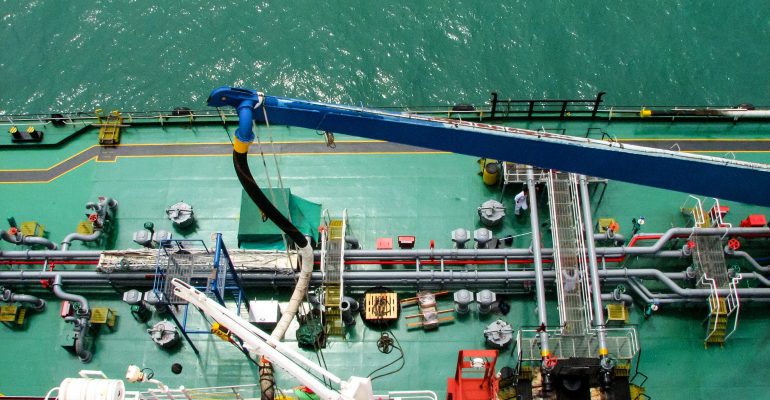Mediterranean SECA
The designation of the Mediterranean as an emission control area means that, starting May 1, 2025, ships will be mandated to use marine fuel with reduced sulphur content. The permissible sulphur content in marine fuels will be reduced from the current limit of 0.5% to a significantly lower level of 0.1%.
Smooth transition?
Scrubbers, having been heavily debated, seem to have been the smoothest transition, both operationally and cost wise, with the spread of HSFO and VLSFO exceeding 300$ pmt. However, it is much too early to determine if they can stay in the game, as far as regulations are concerned, as well as operationally for the years to come.
MGOs, LNGs & Biofuel also transitioned relatively smoothly, with the costs of operation remaining similar, although still much higher than heavy fuel oils. However, shipowners with ships on the spot market, having minimal control over ports of call, have been feeling the heavy burden of this transition, with rising costs and disruption, while the industry experiments with the new bunker blends.

Fuel Oil Treatments gradually
adopted as a standard in the industry
It was common practice for the marine industry to neglect treating their fuel if the fuel analysis report showed that that the bunker met the specifications agreed with the supplier. Only a fraction of ship operators would have their fuel oils tested with an independent shore-based laboratory. The industry’s attitude is now different and there are specific reasons as to why.
The industry has always been working on a trust basis, which has proven to be reliable for most of the time. However, new blends as the VLSFO are still experimental for the most part and in dire need of improvement. As such, quite a bit more often a bunker batch is different to original intentions and its qualities may be lesser known even to producers. Compatibility improvement is crucial. On top of that, due to the nature of marine fuel oils and specifically VLSFO, an average of 1-3% of the fuel is completely wasted, accumulating in the bottoms of tanks. Up to 10% of the fuel is utilised to a lesser efficiency capacity, due to the lower calorific value and in many cases reduced combustion efficiency.
Marine fuel oils can be among the harshest fuels in any industry. VLSFOs are even harsher in use. Left untreated, they will cause substantial damages to the engines and fuel system; substantially more costly, as compared to utilising the right fuel treatment which will in action extend engine life and improve their maintenance intervals. Adding to all above facts, with fuel lubricity and efficiency improved, the correct fuel treatment undeniably adds to both the shipowners’ and operators’ short and long-term value.
Vecom Marine has compiled the VLSFO-proof Package
The Vecom Marine Solution
Vecom Marine has been focused on these issues and is well prepared to offer reliable and thoroughly tested solutions. Keeping track of the industry’s trends and the blend types produced, we are ready to help avoid the serious costs that could arise from all VLSFO related issues.
VLSFO issue:
- Engine Compatibility & Lubricity
Low lubricity directly translates to more stress on engine components. This in turn leads engine life expectancy and performance to drastically diminish. Adding to the fact, many of the new blends’ combustion properties can be gravely lower, which is a direct equivalent to unpumpable fuel waste within the fuel network. If those issues are not dealt with it can mean massive costs for the vessel in both resources and time. Vecom Marine has designed FOT LI 4100 specifically to cope with low sulphur middle distillates. With excellent lubricity improving characteristics by both HFRR and SLBOCLE bench test procedures, this product offers very good solubility and therefore does not negatively affect filterability characteristics of the doped middle distillate. If lubricity is lower than 460µ on the wear scale HFRR, it is essential to add this treatment soonest possible. Additionally, Vecom Marine highly recommends Test Kit Total Iron to keep a constant, accurate monitoring of the engines’ wear. The test will analyse how much iron content has ended up in the scavenge drain’s lube oil as a direct result of the constant wear and stress the engine is undergoing from the fuel oil. Low lubrication from the fuel oil wears out the metal in the engine and by scraping down lube oil in the lube oil cylinder we can determine how much metal has been worn off. The more the iron concentration, the more stress the engine is taking (or showing corrosion signs) and the more in need of lubrication it is. This corrosion indicator is most often tied to lubricity, but will as well act as a general red flag in the engines’ operations.
Vecom Marine solution:
VLSFO issue:
- Bunkering Compatibility
With each bunkering accompanied by a lab test, it is the reality that compatibility, density and stability of the new and existing fuels are to be known at the soonest possible time of the bunkering. Test Kit Compa Dens, a proven technology, can withstand even the most severe marine conditions and provide accurate feedback on the spot. Instant knowledge of the compatibility will help determine the treatment dosage of Vecom Marine’s renowned FOT Sludge Dispersant, which will provide assistance in the fuels becoming homogenous. Vecom Marine advises a thorough fuel tank clean prior to the use of the treatment as to avoid sludge overflow. After starting the treatment, fuel tank cleaning will no longer be a problem as tanks are kept clean in motion.
Vecom Marine solution:
VLSFO issue:
- Catalyst Fines
While the different VSLFO fuel blends are being experimented with, it is unfortunately a fact that catalyst fines are being detected in higher rates than ever. Quantity larger than 80 mg/kg in the received fuel oil, is almost impossible to be reduced by the treatment plant and abrasive engine wear will take place. It is vital to monitor their accumulation in the tank, since if not reduced by suitable fuel cleaning, the abrasive nature of the fines will cause damage to the engine, fuel pumps, injectors, piston rings and liners. Designed for easy and convenient use, as well as endurance in time, Test Kit Cat Fines can fast and accurately inform of the cat fines level and save the ship from severe engine damages.
Vecom Marine solution:
VLSFO issue:
- More Wasted Fuel
This past year, many of our clients have chosen FOT Sludge Dispersant to transition smoothly into IMO 2020 with great success. And one of the main reasons is the product’s innate ability to help with compatibility and homogeny of the fuels while making sure fuel use is maximised, with no sediments left behind to accumulate in unpumpable wasted layers. Fuel performance is additionally improved as combustion efficiency increases. Many of the VLSFO blends are in even greater need of combustion improvement. VLSFOs not treated correctly, will accumulate sludge layers even faster, with cases of clogging the fuel lines, immobilising the ship.
Vecom Marine solution:
VLSFO issue:
- Centrifugal Purifiers, Auto-Filters & Strainers Clogging
During these first months of operation of VLSFO, separator/purifier disks clogging has been a huge problem to many vessels. It can stop operations and cause big delays until the purifier is cleaned. Separator Disc Cleaner is especially developed to combat this in the fastest and most efficient way and save significant time in the crews’ operations. Using FOT Sludge Dispersant will also combat this problem by drastically diminishing the sludge ending up in the purifier disk.
Vecom Marine solution:
VLSFO issue:
- Cold Flow
Immobilised, waxed fuel due to cold flow can become very troublesome to handle. The wax remnants will require intensive manual labour to remove with the storage tanks unusable until that point. FOT Flow Improver significantly improves the cold flow properties of middle distillates and reduces wax accumulation. According to the characteristics of the particular middle distillate, 25 – 500 ppm is usually sufficient to considerably reduce both the CFPP (Cold Filter Plugging Point) and the Pour Point of diesels and heavy fuel oils.

